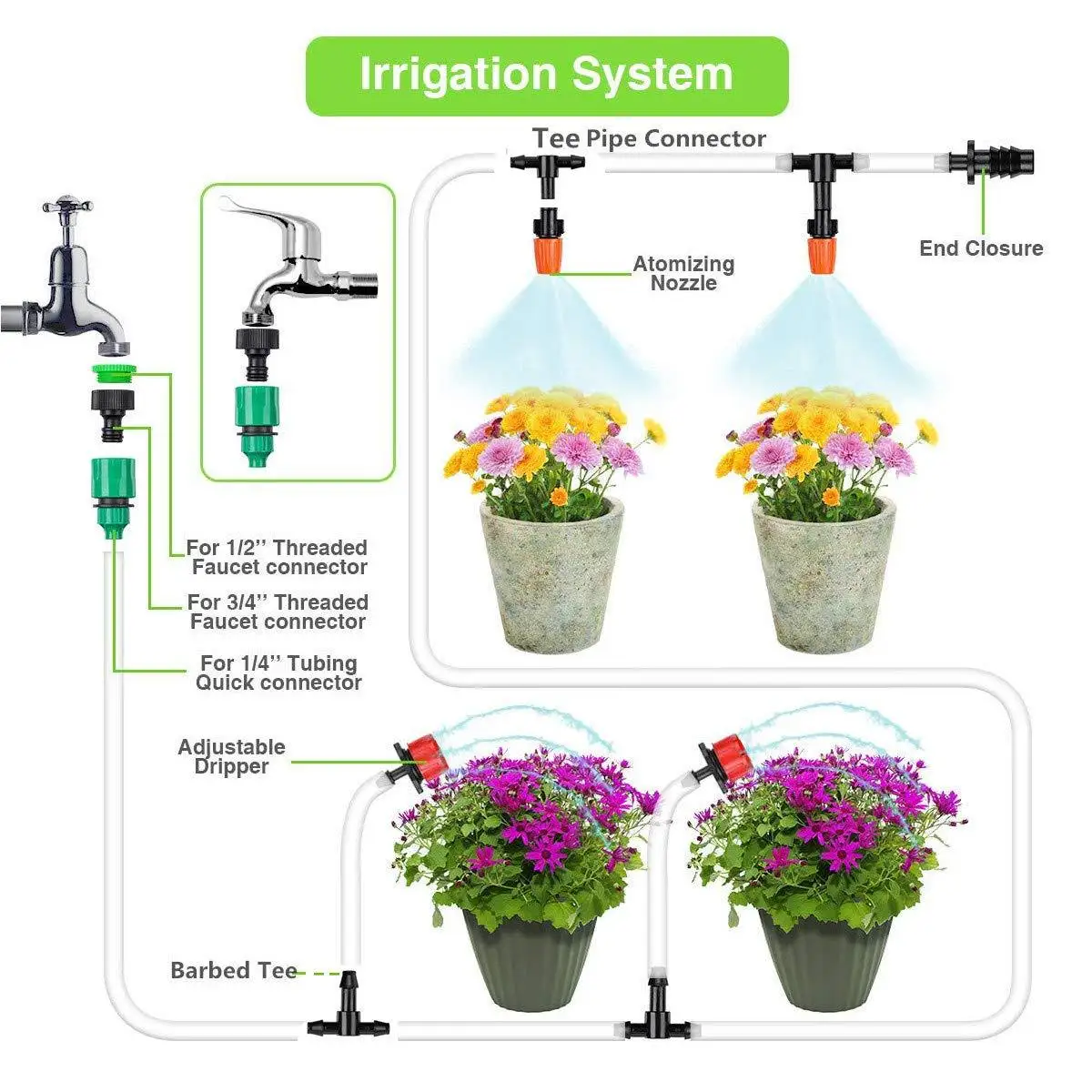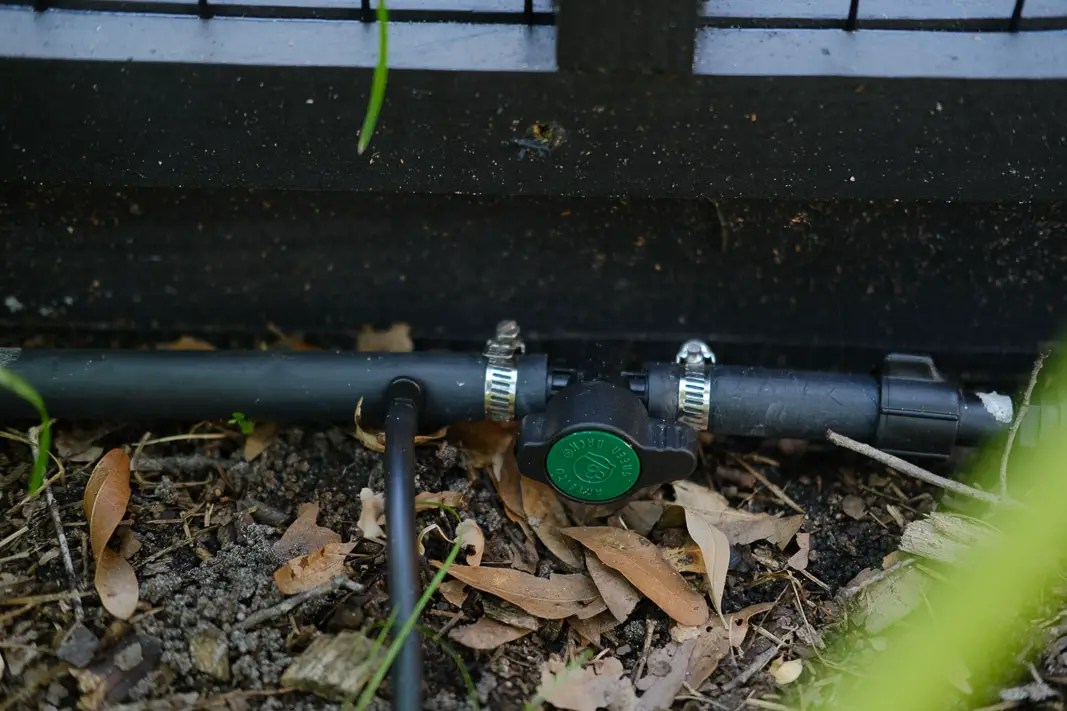Table of Content
To reduce evaporation, add a dry mulch on top of the soil such as a thin layer of dried grass clippings, comfrey leaves, hay, straw or wood chip. Water can seep through this layer but it doesn’t evaporate quickly and the soil below is kept moist. If you suffer from slug damage in your garden, it’s best to only apply mulch during summer as during damp seasons slugs can multiply under the protection of soft mulches. When cared for properly, hoses can last several years or even longer. Walk your system from time to time throughout the growing season to check for leaks or any displacement. If you live in an area that has commercial fruit and vegetable production, then accessing the parts for this system will be nearby.

The size and type of garden, along with the type of soil and other factors, are worth noting and planning for. Here are some factors to keep in mind when buying a drip irrigation system. Inserting a timer between the hose bibb and the filter body will greatly assist you in running the system on a daily basis. You will also need a series of different connectors, clamps, and end-stops to complete the system. These components can often be purchased at garden centers or bought online at irrigation supply companies.
Drip Fittings
Evaporation and waste is reduced because the water is delivered directly into the soil. Follow the pattern you've created for your watering layout plan and install the soaker hoses throughout the garden area. Simple bamboo or wooden stakes can be used to direct the hoses and hold them in place. Attach each of the two soaker hoses to each of the two manifold outputs. The manifold connections will also have separate on/off valves allowing you to operate each hose individually or both simultaneously. For this project, we will put together and install an irrigation system for an eight foot by ten foot garden using soaker hoses, a manifold, and a timer.

If you’re watering raised or flower beds filled with garden soil, you shouldn’t have much issue making a drip irrigation system work for you. Depending on what you’re growing, you might have to get creative with a system of in-line and point-source emitters. One of the great values of a drip irrigation system is how flexible they are. If designed correctly, a single system can water a wide variety of plants. Now that you’re familiar with the different types of systems and emitters, you can focus on creating your garden’s ideal system.
Rain Bird Drip Expansion Kit
You can choose the exact amount of water your system gets without activating the system manually. You’ll have remarkably consistent results in your garden, and you’ll be able to regulate your water usage perfectly. An in-line screen filter protects your system from these pressure-blocking particles. They install at the hose faucet and catch obstructions before they can make it into the system. If you notice water flow starting to reduce throughout your system, it’s a safe bet that you need to remove the screen and clean it out. These bubblers hook to the main hose with a small length of tubing.
The easiest way to do this is to punch a hole in the main tubing and insert a transfer barb which feeds thinner quarter-inch tubing up to where the water is needed. This is then connected to quarter-inch dripline to supply the plants. From easy installation to automatic watering to low maintenance, drip irrigation systems will help create a better garden space for your home. To combat this, the best drip irrigation system emitters are pressure compensating by design.
Designing your drip irrigation system
Never run a fertilizer containing phosphorus before or after a calcium fertilizer without flushing the lines completely as you will create a precipitate that will permanently clog the emitters. Drip Fittings DIG’s drip irrigation fittings are available in a variety of sizes and configurations for both home gardeners and professionals. The compression fittings are used with the 1/2″ drip tubing and the barbed fittings are used with the ½” or 1/4″ drip tubing or micro tubing. The compression fittings use a simple wrist action; the drip tubing is “walked” into the compression fittings for a very tight fit with no tools, glue, or clamps required. The barbed irrigation fittings are pushed into the drip tubing or micro tubing to ensure a leak proof fit. DIG provides additional types of drip irrigation fittings with various configurations and uses.

This is great for small seedlings but once the plants become larger it can mean that only the top inch of the soil is ever dampened. For crops that put down deep roots, watering more heavily but less regularly can help build up reserves of moisture deeper in the soil, making them more resistant to hot dry spells of weather. The kit’s faucet connector, while threaded, isn’t high quality, however—and those with high water pressure may find it pops off the faucet. Whichever way you install emitters, they’re usually preset at ½, 1, or 2 GPH .
Rugged and durable construction for a long life, DIG battery operated controllers offer programming flexibility for a wide range of applications using two AA batteries that can last up to 3 years. Completely waterproof and able to operate in harsh environments, the RBC series of battery operated controllers are dependable solution for any irrigation systems above or below grade. Soaker hose restrictors are small blue disks with a pinhole in the middle. These are already installed in purchased soaker hoses located at the end of the hose to be connected to the manifold.
It doesn’t include any fittings for creating hose grids; it’s purely a plug-and-play kit that will keep your garden’s raised beds irrigated. Once you’ve determined the plants and soil you have, you can figure out the plants’ water needs and choose the correct emitters. Ocean Breeze Kits Misting System DIG’s OCEAN BREEZE® low-flow fogger outdoor misting systems are used through the hot summer months for cooling around patios, pools areas and animal areas. The OCEAN BREEZE® misting systems are nontoxic and operate at pressures normally found in homes, without the need for expensive pumps. By increasing the moisture content of the surrounding air, the OCEAN BREEZE® Evaporative Mist Cooling Systems can dramatically reduce the air temperature.
Please allow additional time if international delivery is subject to customs processing. Watering containers can be tricky, but Orbit has figured out how to get the job done effectively with its Micro Watering Drip Kit. It includes eight bubblers and all the necessary hoses and fittings to hook them up in pots and containers. The hose can hide behind a pot or run through it from the bottom.
Consider poison baits and traps to prevent additional damage to your plants and drip lines. Some systems, especially most emitter systems, need to be dismantled and stored over the winter in cold climates to avoid damage from freezing. You'll want to periodically inspect your irrigation system to make sure it's functioning properly, and replace or repair any parts that are worn out or damaged.
Water systems often contain sediment, dirt, or even scaling from metal pipes, all of which can result in obstructions that limit water flow. Plants with high water needs in poorly drained soils can also suffer if overwatered. If this is the situation in your garden, you may be better off purchasing half-gallon emitters or 12-inch spaced in-line tubing to help keep your plants from drowning. You might want to work some sand into the soil as well to increase drainage.

It is intended to disperse water slowly and evenly, and to conserve water. Because drip irrigation systems and their various parts may be unfamiliar to many people, here are some answers to the two most common questions folks often have about them. Perhaps the best part of this system is its “Flex-Mist” flexible nozzle tubing that will hold its position, creating pinpoint accuracy and minimizing water waste. While this system works very well for hanging baskets, it will be difficult to retrofit it for other uses. The clips won’t keep hoses in place in a flower bed, likely leaving the nozzles in the dirt.
They regulate flow and help to prevent pressure leaks from developing in the hose line. The average drip irrigation kit runs anywhere between $15 and $480, according to HomeGuide. If you’re looking for a way to save money and use some stuff you already have, you can actually create drip irrigation with a garden house. With this more efficient watering system, there’s hardly any work involved at all. Since drip irrigation uses less water than other methods, you’re also saving money. If you want to save some money and make use of a few things you have lying around the house, try to create DIY drip irrigation with a garden house.


No comments:
Post a Comment